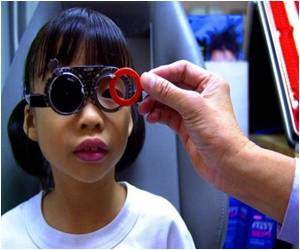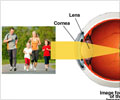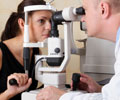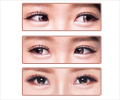Differences in the diameter of the ciliary muscles used to focus may have important implications for providing patients with a customized IOL fit.

‘Using eight different high-tech instruments and results of other imaging studies, researchers made high-resolution measurements of the eye structures.’





That may improve the ability to use accommodating IOLs as a surgical approach to correcting age-related declines in near vision, or presbyopia, suggests the new research by Kathryn Richdale, OD, PhD, of State University of New York College of Optometry and colleagues. Eye Measures Vary with Vision Prescription and Age Using eight different high-tech instruments and results of other imaging studies, the researchers made high-resolution measurements of the eye structures in 91 adults, aged 30 to 50 years. The participants --all free of cataracts or other eye diseases-- had vision prescriptions ranging from nearsightedness (myopia) to farsightedness (hyperopia).
The various measures of eye structure were analyzed for association with age, refraction (vision prescription), and accommodation (the ability to focus on distant or near objects by changing the shape of the lens of the eye). As we age, loss of lens accommodation causes presbyopia--decreased ability to focus on close-up objects.
Consistent with previous studies, the results showed that the lens becomes thicker, less flexible, and more sharply curved with age. After adjustment for other factors, age was also related to a decrease in the diameter of the ring of ciliary muscles that change the shape of the lens in the process of accommodation. This tightening of the ciliary ring may also contribute to the development of presbyopia in older eyes.
The study also found noticeable differences related to refractive error: eyes with myopia were significantly larger, especially front to back (axial elongation). As reported in previous studies, myopia was also associated with increased curvature of the lens.
Advertisement
That has important implications for the use of accommodating or "focusing" IOLs as a surgical approach to correcting presbyopia. Placed after removal of the inflexible and less-transparent lens in patients with cataracts, accommodating IOLs can change focus--much as the natural lens does in younger people. However, these lens implants have yet to be widely accepted, reflecting mixed data on their ability to produce usable and sufficient changes in focus.
Advertisement
"The results of this study suggest that accommodating IOLs may need to be available in more than one diameter to allow for maximum benefit," Dr. Richdale and coauthors write. In the future, developing new techniques of measuring ciliary muscle ring diameter might help in providing a "customized" IOL fit for treatment to correct presbyopia.
Source-Eurekalert












